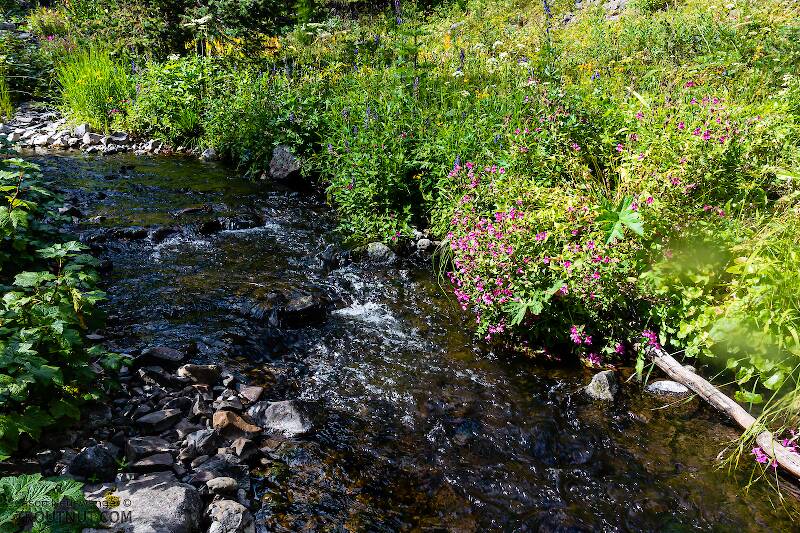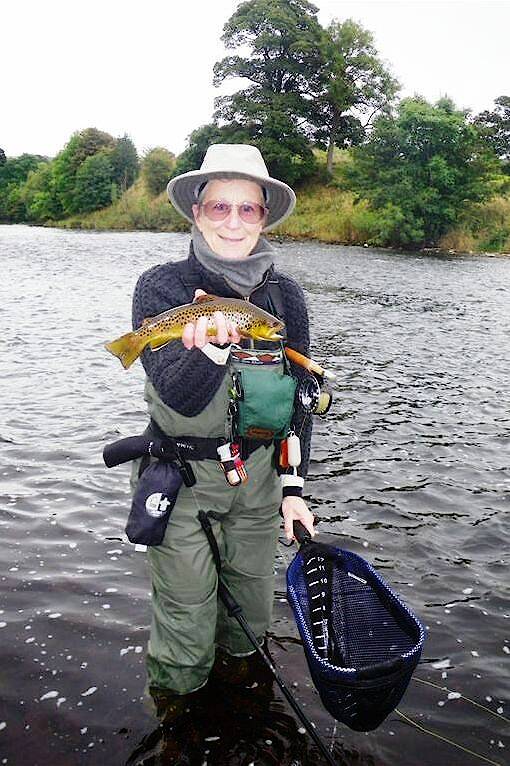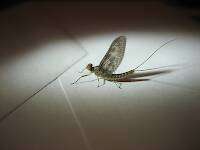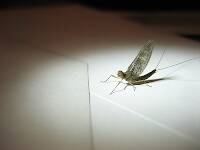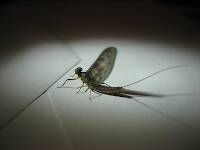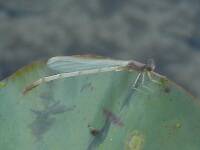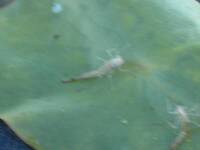
Blue-winged Olives
Baetis
Tiny Baetis mayflies are perhaps the most commonly encountered and imitated by anglers on all American trout streams due to their great abundance, widespread distribution, and trout-friendly emergence habits.
Featured on the forum

This is the first of it's family I've seen, collected from a tiny, fishless stream in the Cascades. The three species of this genus all live in the Northwest and are predators that primarily eat stonefly nymphs Merritt R.W., Cummins, K.W., and Berg, M.B. (2019).

Troutnut is a project started in 2003 by salmonid ecologist Jason "Troutnut" Neuswanger to help anglers and
fly tyers unabashedly embrace the entomological side of the sport. Learn more about Troutnut or
support the project for an enhanced experience here.
Dunde on May 21, 2011May 21st, 2011, 10:41 pm EDT
im new to tying flys and fly fishing. i want to know how u get the end of the flys fluffy so if enyone reply that will be good.THANKS:)
CaseyP on May 22, 2011May 22nd, 2011, 5:45 am EDT
fluffy...for a wooley bugger or other fly with a marabou tail, two things will make the tail fluffier: more marabou, and tying it carefully at one place. be sure not to allow the thread to wander around the area because that will bind down all those fibers you want to fluff up.
remember, too, that once the fly is wet and you take it out of the water, it's going to look pretty pathetic--all mushed flat. it took my Best Fishing Buddy a while to realize that what he thought were rabbit-poop shaped wet flies actually fluffed out underwater and looked alive. same with marabou tails.
hope this helps.
remember, too, that once the fly is wet and you take it out of the water, it's going to look pretty pathetic--all mushed flat. it took my Best Fishing Buddy a while to realize that what he thought were rabbit-poop shaped wet flies actually fluffed out underwater and looked alive. same with marabou tails.
hope this helps.
"You can observe a lot by watching." Yogi Berra
Troutnut on May 22, 2011May 22nd, 2011, 11:45 pm EDT
I agree with Casey on the general advice. It would really be helpful if you say which flies you're tying. The best way to make them "fluffy" can be different for different types of flies.
Jason Neuswanger, Ph.D.
Troutnut and salmonid ecologist
Troutnut and salmonid ecologist
Quick Reply
Related Discussions
Topic
Replies
Last Reply
1
Jul 11, 2008
by Taxon
by Taxon
11
Jul 11, 2016
by Chiquis
by Chiquis

